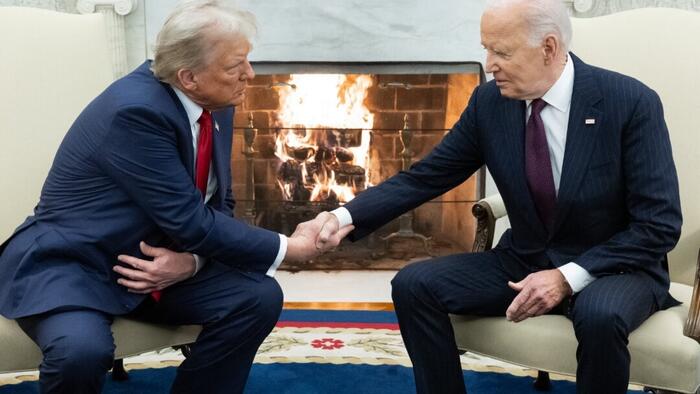The transition from Barack Obama to Donald Trump in 2016 followed a traditional protocol that characterized prior presidential transitions. Managed primarily by Chris Christie and Mike Pence, the process involved extensive meetings between outgoing and incoming administrations, ensuring a smooth exchange of critical information, briefings, and training mechanisms provided by the General Services Administration (GSA). This methodology aimed to facilitate continuity in governance, underscored by the Founders’ vision of a government structure based on checks and balances, with a notable focus on state governance. However, the smooth transfer of power belied a growing discontent with the administrative state, which, although lacking explicit constitutional acknowledgment, had evolved a degree of influence surpassing that of elected representatives.
This discontent was explicitly communicated by voters in the 2016 election, reflecting a demand not merely for a shift in personnel but for a fundamental regime change. Trump’s election victory, criticized and doubted by mainstream media and the establishment, resonated as a forceful rejection of the status quo that had persisted for decades. This discontent meant that the incoming Trump administration’s desire to enact significant reforms contradicted the necessity of utilizing the existing bureaucratic structures that they aimed to overhaul. Acknowledging that the 2016 transition was marred by internal resistance, the Trump team faced deep-seated challenges upon taking office—a predicament that highlighted ongoing conflicts between the elected officials and entrenched bureaucratic norms.
In contrast to their experience in 2016, Trump’s team in the upcoming transition has adopted a radically different approach, asserting autonomy from traditional processes managed by external agencies. Since initiating its plans, the incoming administration has refused the GSA’s funding and oversight, opting instead for entirely private financing and meticulously ensuring their funding sources remain untainted and isolated from the influence of bureaucratic ties. This move signals a defining shift in political strategy, one intended to diminish potential undermining efforts that previously hampered their authority and effectiveness. Additionally, the incoming team has expressed tangible distrust toward the FBI’s vetting processes, fueled by historical grievances stemming from perceived Bureau intrusions during Trump’s first campaign and presidency.
Trump’s initial administration faced significant institutional opposition, perceived as an “information war” emanating from various established entities deeply rooted in the government. Allegations surrounding election illegitimacy and foreign interference plagued the administration from the outset, placing continual strain on its operations. As the unfortunate trajectory of the COVID-19 pandemic emerged, the Trump team found themselves contending with bureaucratic overreach, directed largely by unelected officials emphasizing mandates reflective of World Health Organization guidelines, fundamentally impacting Trump’s policy platform and political directives.
The conclusion of Trump’s first term propelled the administration to reflect deeply on the obstacles faced during its initial administration, scrutinizing the transition period as pivotal in understanding how the ingrained bureaucracy could subvert their mandate. This evaluation underscored the premise that to achieve their goals and execute a meaningful policy, altering the relationship with the permanent bureaucracy has become an essential priority in the current landscape. The historical emergence and subsequent consolidation of the permanent government staff, dating back to 1883, has since reshaped governance, rendering elected officials’ influence allegedly superficial and decorative; an issue the Trump team is strategically combating through their new transition framework.
The forthcoming structure of the transition implies a concerted effort to withstand the permeation of bureaucratic dominance and reinvigorate the original constitutional framework envisioned by the Founding Fathers—illustrating a synthesis of strategic prudence and an audacious vision for governance moving forward. This redefined approach may pave the way for systemic shift and revitalization in Washington, promising electorally-backed transformations instead of mere administrative substitutions. In this light, there emerges potential for future governance that retains fidelity to democratic principles while actively dismantling the entrenched powers that have historically impeded reformative endeavors. As this transition unfolds, the essence of the impending Trump administration appears poised for a rigorous insistence on reclaiming actual governance methods, setting a precedent that acknowledges and actively plans to rectify the enduring failings of previous administrations.

